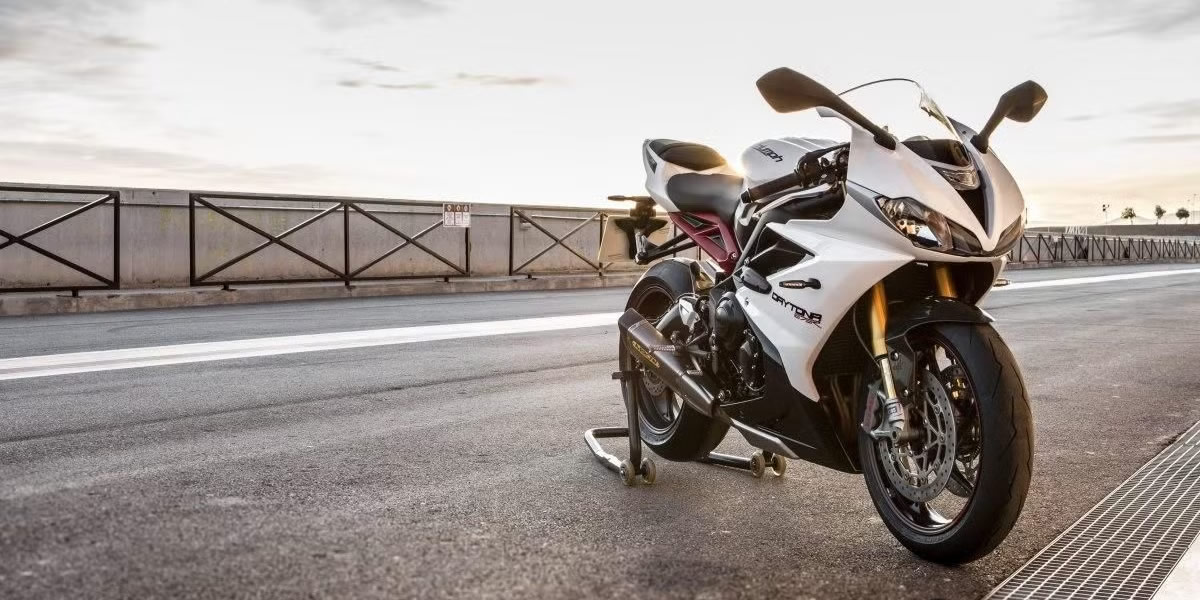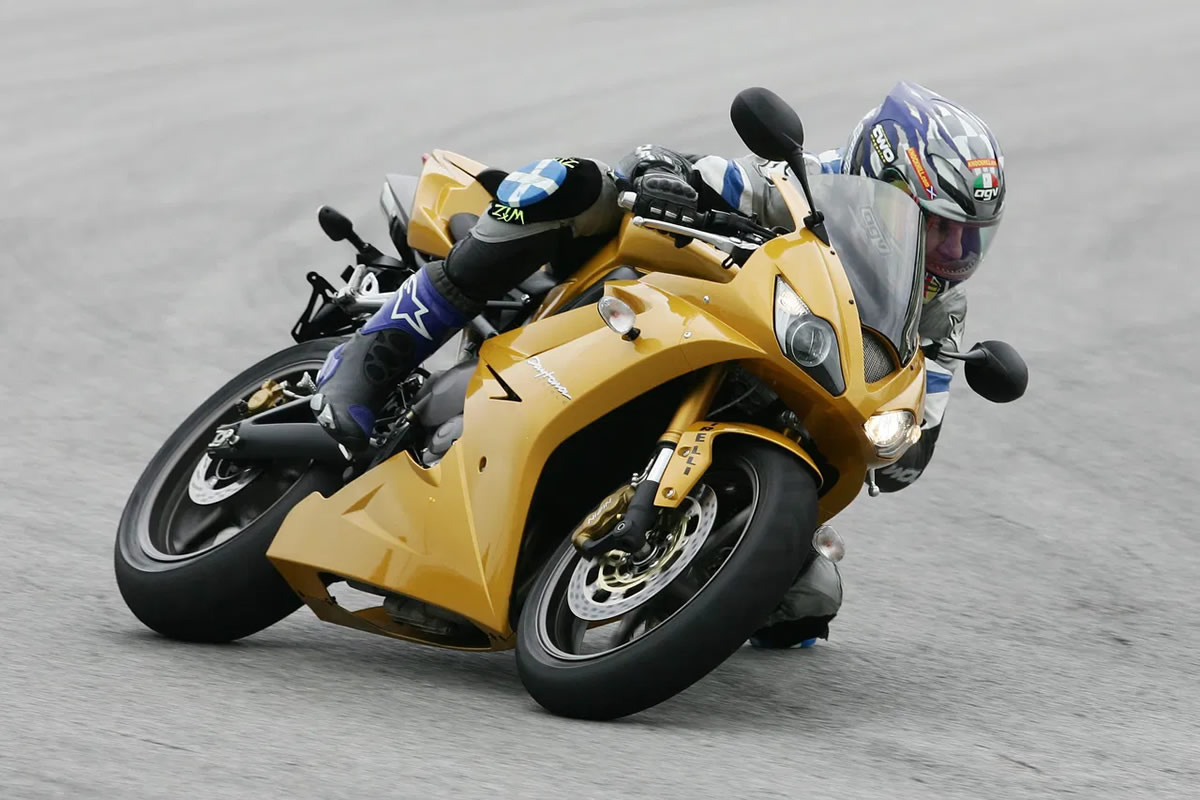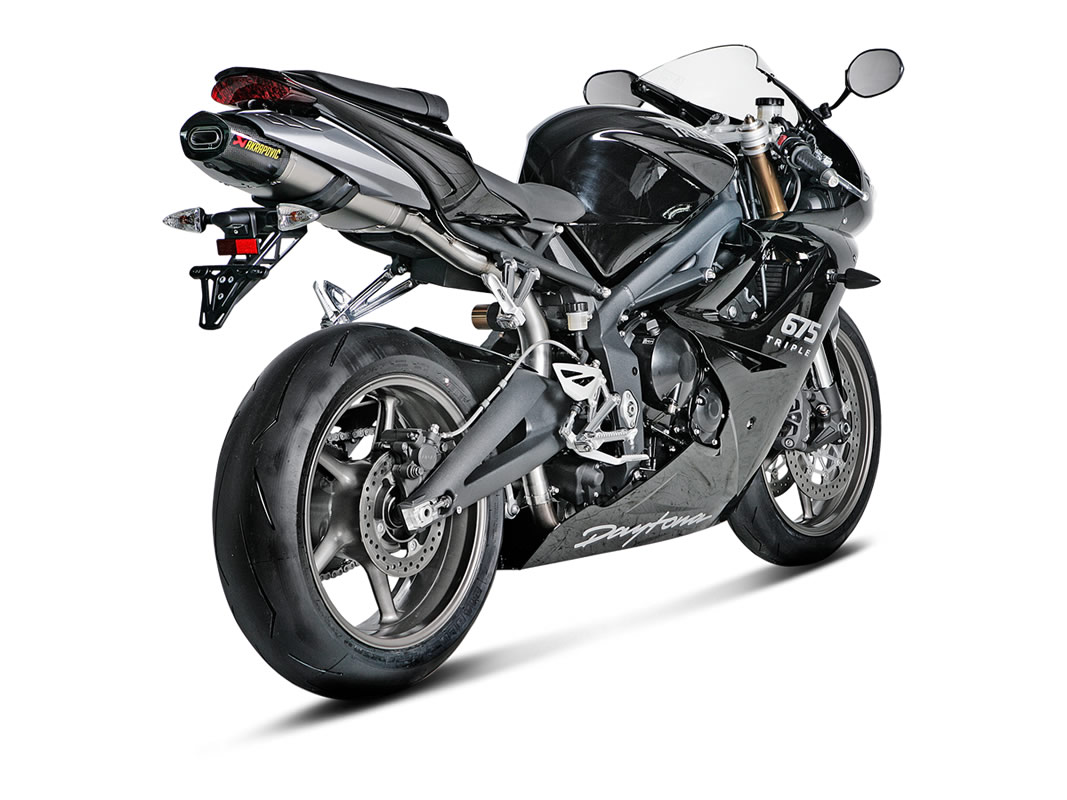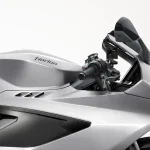

The Triumph Daytona 675: A British Triple Threat That Redefined the Supersport Class
In the fiercely competitive world of supersport motorcycles, dominated for decades by high-revving Japanese inline-fours, Triumph dared to be different. In 2006, the British manufacturer unleashed the Daytona 675, a machine that not only challenged the status quo but fundamentally redefined what a middleweight sportbike could be. With its distinctive triple-cylinder engine, razor-sharp handling, and undeniable character, the Daytona 675 quickly carved out its own legendary status, becoming a beloved icon for riders seeking something truly unique.
A Brief History and Evolution
The genesis of the Daytona 675 can be traced back to Triumph’s earlier attempts in the middleweight sportbike arena, most notably the four-cylinder Daytona 600 and 650. While competent, these bikes struggled to truly stand out against the established Japanese giants. Triumph, recognizing its heritage and the success of its triple-cylinder engines in models like the Street Triple, made a crucial strategic decision: to build a supersport around a three-cylinder powerplant.
Launched to critical acclaim in 2006, the Daytona 675 was an instant hit. Its narrow profile, aggressive styling, and that glorious triple engine immediately set it apart. Over its production run, which spanned until 2016 (with the ‘R’ model continuing until 2017), the Daytona 675 received several significant updates.
A notable refresh in 2009 brought over 50 technical improvements, including a lighter overall weight, a remapped ECU for increased power, and improved suspension damping. The most substantial overhaul arrived in 2013, featuring a new engine with a shorter stroke, repositioned exhaust (from under-seat to low-slung), and further chassis refinements.
Alongside the standard model, Triumph introduced the higher-specification Daytona 675R in 2011, boasting premium components like Öhlins suspension and Brembo brakes, elevating its track prowess even further. The Daytona 675 was eventually succeeded by the limited-edition Daytona Moto2 765, a fitting tribute to its racing pedigree.

Engine: The Heart of the Beast – The Triple Advantage
At the core of the Daytona 675’s appeal is its magnificent 675cc, liquid-cooled, 12-valve, DOHC, inline-three engine. While its Japanese rivals chased peak horsepower at stratospheric revs, Triumph’s triple offered a refreshingly different power delivery. Producing around 125-128 bhp and a healthy 70-75 Nm of torque, the Daytona 675 wasn’t just about outright top-end grunt. Its true genius lay in its incredibly strong and usable mid-range torque.
This characteristic meant that riders didn’t need to constantly wring the engine’s neck to access power. Whether navigating city streets, flowing through B-roads, or launching out of corners on a track, the Daytona 675 delivered immediate, exhilarating drive. It felt less breathless than many inline-fours in the mid-range, making it a far more forgiving and enjoyable road bike. Coupled with a slick 6-speed gearbox and a distinctive, addictive exhaust note that howled as the revs climbed, the triple engine provided a visceral and engaging riding experience that few others could match.

Chassis and Handling: Precision and Agility
The Daytona 675’s engine was complemented by an equally impressive chassis. Built around a lightweight aluminum beam twin-spar frame, the bike was designed for agility and precision. Its narrow waistline and compact dimensions contributed to a feeling of incredible nimbleness, allowing riders to flick it from side to side with minimal effort.
Suspension duties on the standard model were handled by fully adjustable Kayaba forks and a monoshock, which were high-quality units offering plenty of scope for tuning. The ‘R’ models, however, took this to another level with top-tier Öhlins NIX30 forks and a TTX36 rear shock. These fully rebuildable units provided superior damping control and adjustability, elevating the bike’s handling limits even further, not just on the track but also delivering a more composed ride on challenging roads.
Braking performance was equally strong. Early models featured radial-mount Nissin calipers biting on 308mm twin discs up front, with braided lines as standard – a premium touch for its time. The ‘R’ models upgraded to even more potent Brembo monobloc calipers, offering incredible stopping power and feel. The combination of a stiff chassis, high-spec suspension, and powerful brakes gave the Daytona 675 a confidence-inspiring feel, allowing riders to push hard with excellent feedback from the road.
Riding Experience: Road Warrior and Track Slayer
The riding experience on a Daytona 675 is, unequivocally, a sporting one. Its aggressive, race-focused ergonomics – high seat, high pegs, and low clip-on handlebars – put the rider in a committed, “head down, arse up” position. While this might sound uncomfortable for longer journeys, many owners found it surprisingly manageable for a supersport, especially once accustomed to supporting their weight with their core and thighs rather than relying on their wrists.
On the road, the bike shines. The triple engine’s accessible mid-range means you don’t constantly need to be in the upper echelons of the rev range to make rapid progress. It’s surprisingly docile in traffic, yet instantly transforms into an exhilarating machine on twisty roads, where its agility and precise steering allow it to carve through corners with remarkable ease.
On the track, the Daytona 675 truly comes alive. Its balanced chassis, communicative feedback, and potent engine make it a formidable weapon. It inspires confidence, allowing riders to explore the limits with a sense of control that can be less apparent on more frantic inline-fours. While early models lacked advanced electronic rider aids like traction control or ABS (which arrived later), the bike’s inherent balance and predictable nature meant they weren’t sorely missed by many.

Design and Aesthetics
Beyond its performance, the Daytona 675 was a visually striking motorcycle. Moving away from some of the more angular designs of its predecessors, it featured flowing, curvaceous lines that gave it a distinctly European and aggressive yet elegant appearance. The twin headlights, sharp fairing, and distinctive tail section (especially with the iconic under-seat exhaust of the early models) ensured it stood out in a crowd. The ‘R’ models often received special paint schemes and carbon fibre accents, further enhancing their premium appeal.
Verdict: Is the Daytona 675 Still a Contender?
Absolutely! Even years after its creation, the Triumph Daytona 675 remains a highly sought-after and relevant machine in the used sportbike market. Its unique triple-cylinder engine provides a characterful and immensely usable power delivery that stands apart from its inline-four contemporaries. The chassis is a masterclass in agility and feedback, making it a joy to ride on both twisty roads and the racetrack.
For riders who prioritise engagement, handling precision, and a distinctive engine note over outright peak horsepower figures, the Daytona 675 is an undeniable Triumph. It offers exceptional value for money in the used market, providing a premium supersport experience without the premium new bike price tag. Whether you’re a seasoned track day enthusiast or a road rider looking for an exhilarating and characterful machine, the Triumph Daytona 675 stands as a testament to British engineering and a true icon of the supersport class. Its legacy as the “British Triple Threat” is well and truly cemented.
Categories
- Bike Reviews (16)
- General Motorcycling (33)
- Rider Training & Advice (5)
- Roads & Rides (6)
- Why it Matters (5)
Recent Posts
About us

Popular Tags
Related posts

Yamaha Y-AMT: The Automated Manual Transmission Set to Revolutionise UK Riding

Suzuki GB Launches New Off-Road Experience Centre: 300 Acres of Welsh Trail Riding Awaits

Royal Enfield & British Army Forge New Partnership - Bolstered by the Himalayan 450
Nationwide Motorcycle Delivery
No corner of the UK is too far for the delivery team and it’s partners at Mallory Motorcycles. We proudly deliver to all major cities, towns, and even remote areas across the entire nation, including:
- London, England
- Birmingham, England
- Leeds, England
- Manchester, England
- Sheffield, England
- Milton Keynes, England
- Salford, England
- Sunderland, England
- Brighton & Hove, England
- Portsmouth, England
- York, England
- Colchester, England
- Chelmsford, England
- Exeter, England
- Gloucester, England
- Winchester, England
- Bradford, England
- Oxford, England
- Ripon, England
- Wells, England
- Liverpool, England
- Bristol, England
- Leicester, England
- Coventry, England
- Wakefield, England
- Nottingham, England
- Newcastle upon Tyne, England
- Doncaster, England
- Wolverhampton, England
- Kingston upon Hull, England
- Plymouth, England
- Derby, England
- Stoke-on-Trent, England
- Southampton, England
- Peterborough, England
- Southend-on-Sea, England
- Canterbury, England
- Preston, England
- Cambridge, England
- St. Albans, England
- Lancaster, England
- Norwich, England
- Chester, England
- Wrexham, England
- Durham, England
- Carlisle, England
- Worcester, England
- Lincoln, England
- Bath, England
- Hereford, England
- Salisbury, England
- Lichfield, England
- Chichester, England
- Newry, England
- Truro, England
- Ely, England
- Belfast, Northern Ireland
- Londonderry, Northern Ireland
- Lisburn, Northern Ireland
- Armagh, Northern Ireland
- Glasgow, Scotland
- Edinburgh, Scotland
- Aberdeen, Scotland
- Dundee, Scotland
- Dunfermline, Scotland
- Inverness, Scotland
- Stirling, Scotland
- Perth, Scotland
- Cardiff, Wales
- Swansea, Wales
- Newport, Wales
- Bangor, Wales
- St. Asaph, Wales
- St. Davids, Wales

Mallory Motorcycles Ltd is registered in England and Wales (Company Registration number 13948787). Registered Address Unit 2 Griffon Road, Derbyshire DE7 4RF. Authorised and Regulated by the Financial Conduct Authority (number 1037062). Mallory Motorcycles Ltd is a credit broker and not a lender. We can introduce you to a limited number of finance lenders and for such introductions we will receive commission. The commission payment can be either a fixed fee or a fixed percentage of the amount you borrow. The lenders we work with could pay commission at different rates. The commission we receive will not affect the amount you repay under the credit agreement. All finance is subject to status. Terms and conditions apply. Applicants must be 18 years or over.






